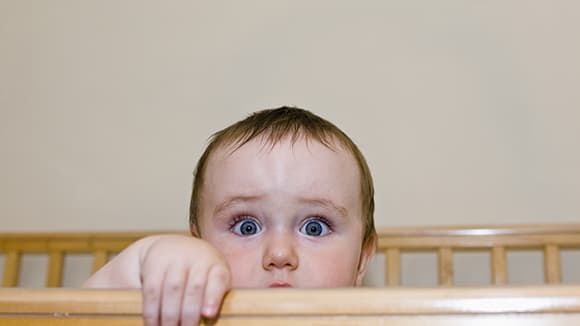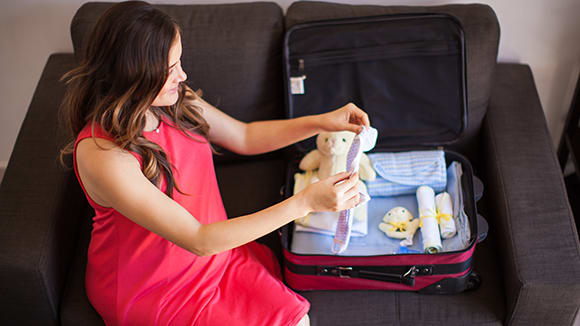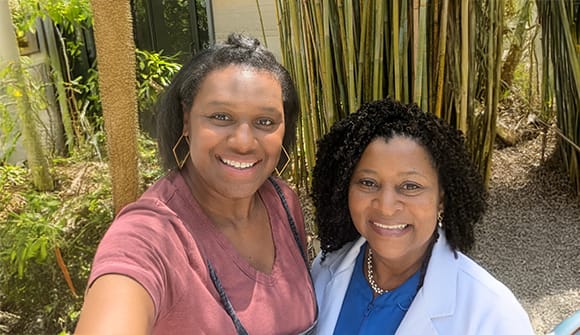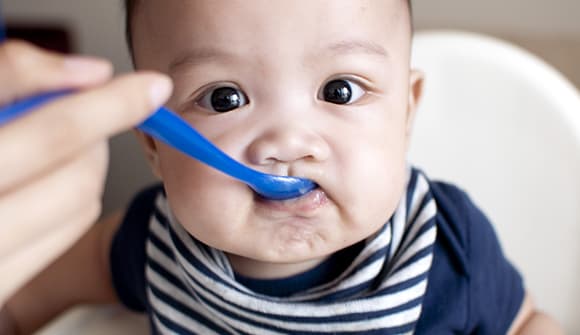Buyers with babies, beware
Some popular baby products may do more harm than good.
Article Date:

When preparing for a baby, new parents invest time and money into babyproofing their home so their little one is safe as they learn and grow in their new environment. They install covers for electrical outlets and locks for cabinets, cover sharp furniture edges and block off stairways.
What they don’t know is that some of the most popular baby products can be just as unsafe for infants — even fatal — if used improperly or without close supervision.
“Most of these products are helpful to parents, but none should be used without reading and following the owner’s manual. It’s important that babies are never left unattended with any of these products,” said Cynthia Dennis, RN, coordinator of Safe Kids Northeast Florida, led by THE PLAYERS Center for Child Health at Wolfson Children’s Hospital.
Dennis also recommends checking the packaging of every product to make sure it is recommended for the age of the child, and says to register any products that come with manufacturer registration cards.
“This information is never used for marketing or junk mail,” Dennis said. “It gives the company a way to contact you should the product you purchased have a recall issued, which could affect your child’s safety.”
Here are some of the top products that can increase the risk of sleep-related deaths, including sudden infant death syndrome (SIDS), and how to prevent things from going wrong once parents bring baby home to their new pillows, seats and swings.
Babocush, Dock-A-Tot™ and Boppy® pillows
These products are all different types of baby body cushions — padded, portable and soft. They’re safe for supervised play time and bonding with parents while awake, but baby cushions become unsafe when used for sleep.
The American Academy of Pediatrics (AAP) warns against letting babies sleep on soft surfaces because they can roll over and block their own airways, causing suffocation. Leaving babies unattended in baby cushions — like while sleeping, using them as padding in a play pen or as a co-sleeping tool — significantly increases the risk of suffocation.
Also, always place baby body pillows on hard surfaces rather than couches or mattresses, and never in an enclosed space. When placed on soft surfaces, suffocation risk increases. When used in an enclosed space, the baby can become trapped between the cushion and the enclosure if they roll too far.
Bumpers
On a stroll through any baby store, parents will see cribs made up with adorable bedding sets, which almost always come with matching cloth bumpers. However, the AAP recommends leaving bumpers out of cribs because they have been proven to increase the risk of suffocation, strangulation and entrapment. Pediatricians do not recommend any type of bumpers, even those made of mesh.
“Infants lack the motor skills and strength to turn their heads should they roll into or under a bumper, which can block their breathing,” Dennis said.
Crib hammocks
Crib hammocks are also a hazard to safe sleep. Companies claim their hammocks can reduce the risk of SIDS because the hammock’s mesh material allows airflow even if the baby rolls over. The baby’s body weight also causes the hammock to pull the fabric in around his body, preventing him from rolling over as easily in his sleep. However, these products often position the newborn’s neck in such a way that the airway may be blocked, causing suffocation despite those other claims of reducing risk.
Wearable baby monitors
Many wearable monitors are marketed as products that will give parents peace of mind by allowing them to monitor their baby’s vitals while they sleep. Some say they will detect when the baby rolls onto his or her stomach or stops breathing.
However, studies show these monitors do not reduce the risk of SIDS because they present new problems. Monitors can experience connectivity issues or set off false alarms, causing stress for parents or even unnecessary ER visits to reassure parents their little one is OK.
In addition, for some parents, wearable monitors can create a false sense of security and make them less likely to check on their baby. Only medical-grade devices should be trusted to accurately read and deliver information about vital signs and breathing.
Rock ‘n Play™
The Rock ‘n Play™ is another product that is not recommended for unobserved sleep because it does not meet the AAP requirement for babies to sleep on their backs on a firm, flat surface.
“The Rock n’ Play™ puts the baby in a semi-reclined position and increases the risk of blocking the airway, leading to restricted breathing,” explained Dennis.
Car seats
Car seats aren’t just a popular product — they’re a necessity. But AAP guidelines clearly state that sitting devices, such as car seats, strollers, swings, infant carriers and infant slings, are not recommended for routine sleep in the hospital or at home, particularly for young infants.
“If a car seat is properly installed according to the manufacturer’s directions and the baby is correctly buckled in, sleeping in the car for short rides is fine,” said Dennis. “For an extended car trip, the AAP recommends getting the baby out of the seat periodically for a break. However, when the car seat carrier is taken out of the car, due to the change in the angle of the seat and its instability, it is recommended that you take the little one out of the seat and put him into his normal sleeping place as soon as possible, where he can sleep lying on his back.”
While the baby product market features a variety of “must-have” inventions for making life as new parents easier, buyers and users must be aware of their baby’s unique safety needs. Following the correct use and warnings found in products’ owner’s manuals and the recommendations of the American Academy of Pediatrics for safe sleep is the best way to ensure babies are sleeping safely.
For more information about safe sleep for infants, visit wolfsonchildrens.com/safesleep. To view the AAP Guidelines for Safe Sleep for Infants, visit healthychildren.org.



